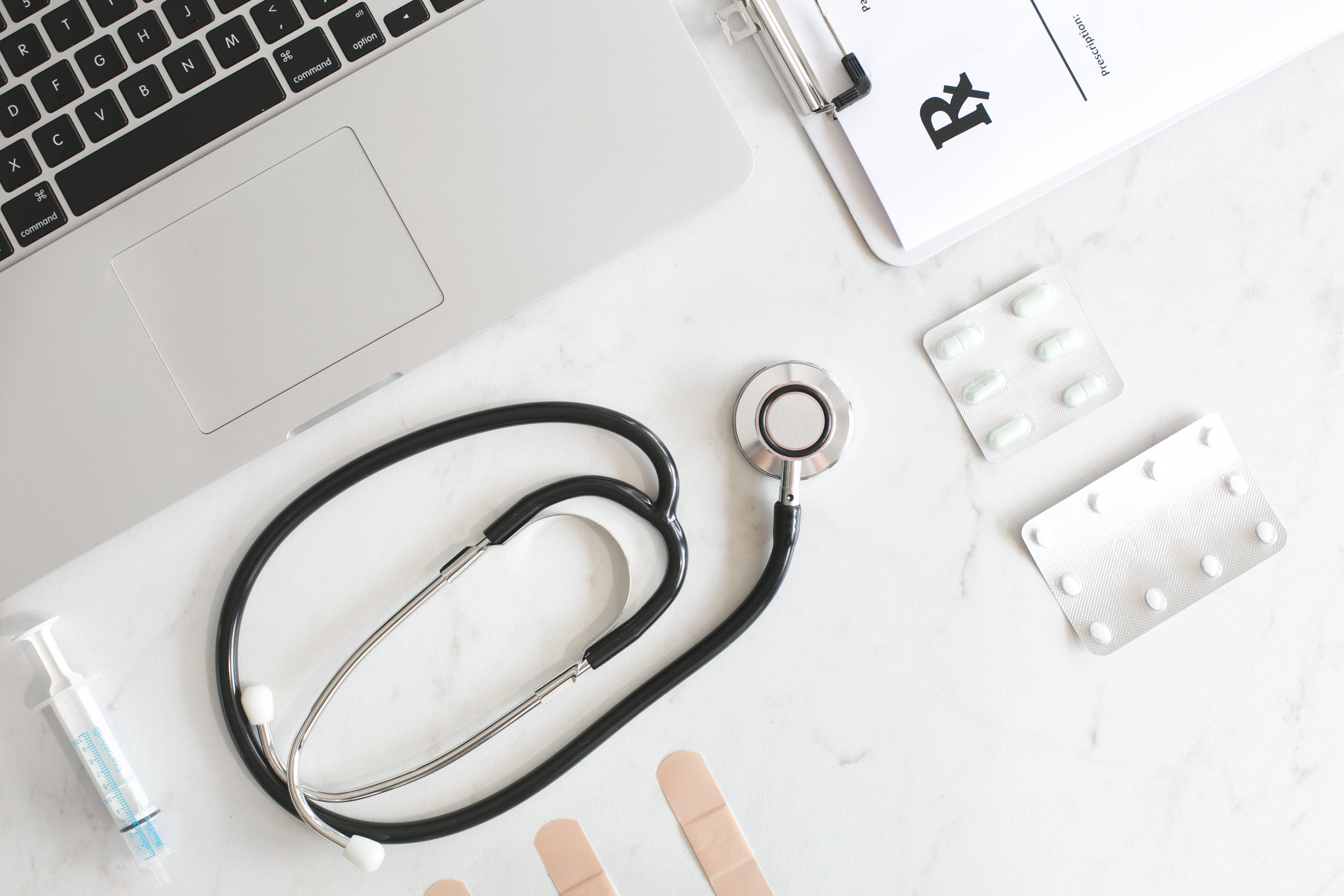Crohn’s disease is a type of inflammatory bowel disease (IBD) characterized by chronic inflammation of the digestive tract. People with Crohn’s disease usually experience a range of gastrointestinal symptoms which often flare up every few weeks or months and include severe diarrhea, abdominal pain and fatigue.
Though there is currently no cure for Crohn’s disease, there are several treatment options to help patients manage the condition and keep symptoms in remission.
Types of Crohn’s Disease
Although Crohn’s disease usually occurs in the small intestines and colon, it can affect any part of the digestive tract between the mouth and anus. Different types of Crohn’s disease may require different medications and surgeries to treat, and each has its own set of symptoms.
The five different types of Crohn’s disease are:
Ileocolitis - Ileocolitis is the most common form of Crohn’s disease. It causes inflammation of the lower part of the small intestine (the ileum) and the colon.
Ileitis - Ileitis is characterized by inflammation of the ileum.
Gastroduodenal Crohn’s disease - Gastroduodenal Crohn’s disease affects the stomach and the first part of the small intestine (the duodenum).
Jejunoileitis - Jejunoileitis causes inflammation in the middle part of the small intestine (the jejunum) and the ileum (the end of the small intestine).
Crohn’s colitis - Crohn’s colitis is characterized by inflammation in some or all of the colon (but not the small intestine).
Signs and Symptoms of Crohn’s Disease
Crohn’s disease causes a variety of gastrointestinal symptoms, which may include:
- Diarrhea
- Bloody stool
- Abdominal cramping
- Frequent bowel movements
- Fever
- Fatigue
- Loss of appetite
- Weight loss
Each of the five different types of Crohn’s disease affect a different part of the digestive tract. Therefore, each type produces a slightly different set of symptoms:
Symptoms of Ileocolitis
The symptoms of ileocolitis include:
- Diarrhea
- Abdominal cramping
- Pain in the middle or right lower part of the abdomen
- Considerable weight loss
Symptoms of Ileitis
The symptoms of ileitis include:
- Diarrhea
- Abdominal cramping
- Pain in the middle or right lower part of the abdomen
- Considerable weight loss
- Fistulas in the lower-right region of the abdomen
Symptoms of Gastroduodenal Crohn’s Disease
The symptoms of gastroduodenal Crohn’s disease include:
- Nausea
- Vomiting (in the case of bowel obstructions)
- Loss of appetite
- Weight loss
Symptoms of Jejunoileitis
The symptoms of jejunoileitis include:
- Abdominal cramps after eating
- Intense abdominal pain
- Diarrhea
- Fistulas
Symptoms of Crohn’s Colitis
The symptoms of Crohn’s colitis include:
- Diarrhea
- Ulcers, fistulas and abscesses around the anus
- Rectal bleeding
- Skin lesions
- Joint pain
Causes of Crohn’s Disease
The chronic inflammation associated with Crohn’s disease is caused by an abnormal immune response in the bowel. The body’s own immune system attacks gut microbes in the intestine, severely damaging healthy tissues as a result 1.
Scientists are still trying to pin down the exact cause of Crohn’s disease, though both genetic and environmental factors are thought to play a role.
Possible Genetic Causes of Crohn’s Disease
Susceptibility to Crohn’s disease (and other types of IBD) is strongly determined by genetics, with up to 12% of IBD patients reporting a family history of the condition 2. Studies have also identified certain genetic mutations that are strongly associated with Crohn’s disease, and which could be passed on in families 3.
Possible Environmental Causes of Crohn’s Disease
Geographic location is a strong predictor of IBD incidence rates, and is suggestive that there is a link between various environmental factors and disease susceptibility.
One theory, called the ‘hygiene hypothesis’, blames the improved sanitation practices of industrialized countries for their increased rates of IBD. The ‘hygiene hypothesis’ suggests that reduced childhood exposure to pathogens creates a greater likelihood of immune hypersensitivity in later life 4. This theory is backed by data showing rising incidence rates of Crohn’s disease and other IBD causes in rapidly-developing countries across Asia, Africa and South America 5.
Higher levels of air pollution have also been identified as a possible environmental risk factor for Crohn’s disease. Some studies suggest that elevated air pollution levels may trigger inflammatory responses, and could even change the composition of microbes in the gut 6.
This theory is supported by the fact that higher rates of Crohn’s diseases (and other types of IBD) are observed in more heavily industrialized regions, where there are also higher levels of air pollution.
Risk Factors for Crohn’s Disease
Certain risk factors may put you at higher risk of developing Crohn’s disease, which include:
Age - Crohn’s disease (and other forms of IBD) can develop at any time of life. However, it usually appears at a young age and most people with the condition are diagnosed by the time they are 30 years old.
Ethnicity - Anyone can get Crohn’s disease, but the condition is most common among Caucasians and those of Ashkenazi Jewish descent.
Family Medical History - Crohn’s disease has a strong genetic component, and those with a family history of the condition are a higher risk of developing it themselves. This is especially true if you have a close relative (parent, child, or sibling) with Crohn’s disease.
Location - Your geographical location may put you at higher risk of developing Crohn’s as the disease is far more prevalent in industrialized areas. This may be due to increased levels of air pollution, or it could be a result of improved hygiene practices in life.
Smoking - Cigarette smoking has also been identified as a risk factor for Crohn’s disease, as those who smoke are more likely to develop the condition.
Use Of Non-Steroidal Anti-Inflammatory Medications (NSAIDs) - NSAIDs (like ibuprofen, naproxen and diclofenac) don’t cause IBD, but they can cause inflammation of the bowel and make the symptoms of Crohn’s disease more severe.
Diagnosis of Crohn’s Disease
Initial Evaluation
The first step towards diagnosing Crohn’s disease is to schedule a consultation with your doctor 7. They will ask about your symptoms, diet and nutrition, overall health, daily routine and your family medical history. They will also perform a standard physical examination of your body, and may check your abdomen for tenderness.
Laboratory Tests
If after your initial examination your doctor suspects that you may have Crohn’s disease, they will likely refer you for one or more laboratory tests to help them establish a diagnosis 8.
- Blood Tests - A blood test will be used to determine your red and white blood cell counts. A low blood cell count may indicate anemia (a common complication of Crohn’s disease), while an elevated white blood cell count signals inflammation or infection in the body.
- Stool Tests - A stool test is used to analyse a small sample of your stool, which can help your doctor to rule out other types of digestive diseases. They may also test for traces of blood in your stool.
Imaging Tests
An imaging test (such as a CT scan or MRI) 9 may be used to examine your digestive tract in more detail. These can help the doctor to identify areas of damaged tissue or inflammation, as well as complications such as fistulas.
Endoscopy
An endoscopy is a medical procedure in which a doctor will use a tiny camera (usually mounted on a long, flexible instrument) to take a look inside the digestive tract.
This is the most accurate method of diagnosing Crohn’s disease, as it allows the doctor to closely examine the organs and tissues of the digestive system.
There are several different types of Endoscopy used in the diagnosis of Crohn’s disease:
- Colonoscopy - During a colonoscopy, a doctor will use a small camera mounted on a long, thin flexible tube with a light attached to examine your colon and rectum. A colonoscopy may also be used to check the lower part of the small intestine (the ileum) for signs of infection.
- Upper GI Endoscopy - Upper GI endoscopy uses a small camera and light mounted on a thin, flexible tube to examine the upper part of your digestive tract. This means the doctor will be able to get a more detailed look of your oesophagus, stomach and duodenum (the upper part of your small intestine) .
- Enteroscopy - Enteroscopy involves the use of a longer endoscope, which is used to examine the small intestine for signs of inflammation and infection.
- Capsule Endoscopy - During a capsule endoscopy, the patient swallows a small camera that makes its way through the whole digestive tract. As it passes through the GI tract, it will take a series of pictures which the doctor will download and examine for signs of Crohn’s disease. Eventually, the capsule camera will painlessly exit the body when the patient has a bowel movement.
Treatment Options for Crohn’s Disease
There is currently no cure for Crohn’s disease. However, there are several medical and surgical treatment options available that can help patients to successfully manage their symptoms.
Treatment of Crohn’s Disease With Medication
Treatments for Crohn’s disease with medication are prescribed based on the patient’s symptoms.
Common medication treatment options for Crohn’s disease include:
- Aminosalicylates - Aminosalicylates are used to regulate inflammation in the digestive tract. They are usually prescribed to people with a recent diagnosis of Crohn’s disease, or those with only mild symptoms.
- Corticosteroids - Corticosteroids are also used to reduce inflammation in the digestive tract by lowering immune activity in the body. These are usually prescribed in cases where milder anti-inflammatory drugs prove ineffective, but can cause side effects and may worsen Crohn’s symptoms in the long-term. Possible side effects of corticosteroids include acne, high blood sugar and high blood pressure.
- Immunomodulators - Immunomodulators work in a similar way to corticosteroids, by suppressing the immune system and reducing inflammation in the digestive tract. However, they can take up to three months to take effect.
Other medications for managing the symptoms of Crohn’s disease include:
- Antibiotics (to prevent or treat infections caused by fistulas)
- Anti-diarrheal medications
- Laxatives
- Dietary supplements (to mitigate nutritional deficiencies caused by Crohn’s disease)
Surgical Treatment of Crohn’s Disease
Around 70% of people with Crohn’s disease will eventually need surgery. Unfortunately, this is not a permanent fix and about 30% of patients will experience symptom recurrence within 3 years of having surgery. Up to 60% of patients will have recurrence within 10 years 10.
There are several different types of surgery for the treatment of Crohn’s disease. The type of surgery required depends on the location and severity of the disease.
The different types of surgery for Crohn’s disease include:
Colectomy - During a colectomy, the surgeon will remove diseased sections of the bowel. This may involve the removal of all or part of the colon.
Proctocolectomy - A proctocolectomy involves the removal of the entire colon and rectum. People who have this surgery usually also require an ostomy surgery.
Bowel Resection - During a bowel resection, the surgeon will cut away diseased or damaged parts of the bowel. They will then staple or sew the healthy sections of the intestine back together 11.
Strictureplasty - Strictureplasty is used to remove or widen parts of the bowel affected by strictures, which cause the gut to narrow and may lead to bowel obstruction.
Ostomy - In cases where sections of the bowel are removed, patients require an ostomy surgery. During this procedure, the surgeon will create a hole (a stoma) in the abdomen through which the body can eliminate waste materials. Feces that are passed through the stoma are collected in a bag worn outside of the body.
There are two different types of ostomy surgery; an ileostomy, which is performed on the small intestine, and a colostomy, which is performed on the large intestine (or colon). A stoma may be permanent or temporary, depending on whether or not it is possible to reconnect the digestive tract at a later stage 12.
Natural Treatment of Crohn’s Disease
Natural or alternative treatments for Crohn’s disease may help patients to manage or reduce their symptoms, and can reduce their need for medical intervention.
Common natural treatments for Crohn’s disease include:
Probiotics and Prebiotics - The human gut is full of microbes, which are composed of ‘good’ bacteria, which help with digestion, and ‘bad’ bacteria, which can make you sick. In healthy individuals, a large population of ‘good’ bacteria can offer protection against ‘bad’ bacteria and help to keep the intestine healthy.
People with Crohn’s disease may not have enough ‘good’ bacteria in their guts, especially if they’ve been using antibiotics. Probiotics are living, ‘healthy’ microbes that can help to restore the balance of ‘good’ and ‘bad’ bacteria in the intestine, and may help to reduce symptoms. The effectiveness of probiotics depends on the severity and location of the disease, so it may not benefit every patient.
Prebiotics are essentially food for ‘good’ bacteria. Therefore, they can help to encourage the growth of healthy microbes and may also reduce symptoms of Crohn’s disease.
Acupuncture - Acupuncture is an ancient technique (and a cornerstone of Traditional Chinese Medicine) in which very thin needles are inserted into the skin at specific points of the body. Although the exact mechanisms of the treatment are not understood by modern scientists, several studies have found that acupuncture improves symptoms and reduces inflammation in patients with Crohn’s disease 13.
Herbal Remedies - Certain herbal supplements may reduce inflammation in the digestive tract and improve the symptoms of Crohn’s disease. The following herbal remedies may help people with IBD to manage their symptoms:
- Boswellia
- Turmeric
- Green Tea
- Marshmallow
- N-acetylglucosamine
- Vitamin D
- Vitamin B12
Stress Management Techniques - Stress doesn’t cause Crohn’s disease, but it can trigger a flare-up of symptoms. Stress management techniques such as yoga, meditation, cognitive behavioral therapy and breathing exercises can help patients to manage and reduce their symptoms.
Crohn’s Diet
There is currently no evidence that Crohn’s is caused by a certain type of diet. However, many patients experience symptom flare-ups after eating certain foods. It is advisable for people with Crohn’s disease to keep a food journal, so they can identify particular foods that exacerbate their symptoms.
In general, it is recommended that people with Crohn’s disease should:
Limit Consumption of Dairy Products - Many people with Crohn’s disease find that dairy products can worsen their symptoms such as diarrhea, abdominal pain and gas. Therefore, it may be helpful to eliminate milk products from your diet.
Limit Consumption of Fatty Foods - Crohn’s disease of the small intestine can make it difficult for your body to absorb fats, which can make diarrhea worse. Sticking to low-fat foods may help to reduce some of the symptoms of Crohn’s disease.
Limit Fibre (If You Know It Triggers Your Symptoms) - Some people with Crohn’s disease find that their symptoms are exacerbated by high-fibre foods, such as whole grains and raw fruits and vegetables. High-fibre foods known to cause gas (like broccoli and cauliflower) may also cause symptom flare-ups.
Avoid ‘Problem Foods’ - Problem foods typically include spicy foods, alcohol and caffeine, all of which can make symptoms more severe.
Eat Small Portions - Smaller portions may be easier for the gut to process. Try eating five or six small meals a day, rather than three large ones.
Stay Hydrated - Dehydration is often a problem for people with Crohn’s disease, as chronic diarrhea can remove a lot of fluids from the body. Try to drink plenty of fluids throughout the day, sticking to plan water intake if possible. Alcoholic, caffeinated or carbonated beverages can make the symptoms of Crohn’s disease worse.
Consider Taking A Dietary Supplement - Malnutrition is common among people with Crohn’s disease, as the symptoms can make it hard to eat or may cause the patient to avoid food altogether. If you have a nutrient deficiency, you may benefit from taking dietary supplements.
Eat Foods Rich In Probiotics - Probiotics may help to reduce the symptoms of Crohn’s disease (and other types of IBD). Foods high in probiotics include:
- Sauerkraut
- Kimchi
- Kefir
- Kombucha
- Live yoghurt
- Miso
Eat Foods Rich In Prebiotics - Prebiotics can encourage the growth of ‘good’ bacteria, which may improve Crohn’s disease symptoms. Foods high in prebiotics include:
- Bananas
- Onions
- Leeks
- Jerusalem artichokes
- Asparagus
- Dandelion greens
- Honey
- Whole grains
Crohn’s Disease vs. Ulcerative Colitis
Crohn’s disease and ulcerative colitis are both types of inflammatory bowel diseases (IBD), illnesses caused by chronic inflammation of the digestive tract. Both ulcerative colitis and Crohn’s disease are characterized by an abnormal immune response in the gut, and share several symptoms, including diarrhea, abdominal pain and weight loss 14.
However, there are some key differences between these two types of IBD, mostly relating to which part of the digestive tract is affected.
Ulcerative colitis only affects the colon, and causes continuous inflammation of the innermost lining of the colon.
Crohn’s disease, on the other hand, can occur anywhere in the gastrointestinal tract between the mouth and anus. In Crohn’s disease, there are healthy areas of the digestive tract interspersed between the diseased areas (unlike ulcerative colitis, which causes continuous inflammation of the entire colon). Furthermore, Crohn’s disease can affect all layers of the digestive tract, whereas ulcerative colitis only affects the innermost lining of the colon.
Although many of the symptoms of Crohn’s disease and ulcerative colitis are very similar, some symptoms are exclusive to Crohn’s disease. This is because Crohn’s disease affects the entire digestive tract, and may cause symptoms affecting the eyes, mouth, skin and joints.
The symptoms of both ulcerative colitis and Crohn’s disease may include:
- Overactive bowel movements and severe diarrhea
- Bloody stools
- Abdominal cramping
- Abdominal pain and discomfort
- Constipation
- Loss of appetite
- Weight loss
- Fever
- (In women) irregular menstrual cycles
Symptoms exclusive to Crohn’s disease may include:
- Nausea and vomiting
- Mouth ulcers
- Joint pain
- Patches of painful, inflamed skin (usually on the legs)
- Sore, red eyes
Complications of Crohn’s Disease
Crohn’s disease can occur in any part of the gastrointestinal tract, and can lead to a wide range of medical conditions, which include:
Bowel Obstruction
Crohn’s disease can cause scarring and narrowing of the bowel, which can cause the digestive tract to become partially or fully blocked. This can limit or prevent the movement of waste material through the bowel. In these cases, surgery may be required to remove the diseased part of the bowel 15.
Bowel obstruction in Crohn’s disease may be caused by:
- Inflammation - Crohn’s disease is characterized by chronic inflammation, which can cause the intestinal walls to thicken and the bowel to narrow.
- Strictures - These are areas of the bowel that have been narrowed by scar tissue, which forms as a result of chronic inflammation.
- Adhesions - These are strips of fibrous tissue that can form in the intestines of people with Crohn’s disease.
Ulcers
Ulcers are open sores that can form as a result of chronic inflammation. In Crohn’s disease, these can affect any part of the gastrointestinal tract, including the mouth, anus and around the genital area. Ulcers can be dangerous if they become infected, cause internal bleeding or lead to the formation of holes (or perforations) in the digestive tract.
Fistulas
A fistula is an ulcer that extends through the wall of the digestive tract, creating an abnormal connection between different parts of the body. Around a third of people with Crohn’s disease will eventually develop a fistula which, if left untreated, can develop into life-threatening abscesses 16.
Anal Fissure
Anal fissures are small tears in the lining of the anus, and are often associated with chronic inflammation and abnormal bowel movements caused by Crohn’s disease. Some of the symptoms of anal fissures are pain and bleeding during bowel movements.
Colon Cancer
The chronic inflammation caused by Crohn’s disease increases the risk of colon cancer. People with Crohn’s disease are often advised to have more regular screening for colon cancer than the general population. Current guidelines for people without Crohn’s disease recommend a colonoscopy every 10 years from the age of 50.
Osteoporosis
Crohn’s disease causes impaired nutrient absorption, chronic inflammation and difficulty exercising, all of which can significantly increase the risk of osteoporosis (low bone density). Osteoporosis affects up to 42% of people with IBD 17.
Arthritis
Chronic inflammation in the digestive tract can trigger inflammation in the joints, causing arthritis (pain and swelling). This is the most common extraintestinal complication of IBD, and may occur in up to 30% of patients with Crohn’s disease 18.
Kidney Stones
Kidney stones are one of the most common complications of Crohn’s disease, and are linked to abnormal fat absorption in the small intestine. Symptoms of kidney stones include nausea, vomiting, abdominal pain, and blood in the urine.
Malnutrition
Malnutrition is a common complication of Crohn’s disease, and may be caused by various aspects of the illness:
- Severe Diarrhea - Severe diarrhea can lead to dehydration, which can also deprive your body of vitamins and minerals.
- Abdominal Pain - Abdominal pain, nausea and diarrhea can make it difficult or even impossible for people with Crohn's disease to eat, leading to food avoidance.
- Rectal Bleeding - Intestinal ulcers can cause rectal bleeding, which can lead to iron deficiencies and anemia.
- Abnormally Frequent Bowel Movements - Frequent bouts of diarrhea can also encourage food avoidance in people with Crohn’s disease, which can lead to malnutrition.
Current Crohn’s Disease Clinical Trials
- A Study of Mirikizumab (LY3074828) in Participants With Crohn's Disease - Worldwide
- A Placebo-Controlled Study of Oral Ozanimod as Maintenance Therapy for Moderately to Severely Active Crohn's Disease - Worldwide
- Study Comparing Intravenous (IV)/Subcutaneous (SC) Risankizumab to IV/SC Ustekinumab to Assess Change in Crohn's Disease Activity Index (CDAI) in Adult Participants With Moderate to Severe Crohn's Disease (CD) - Worldwide
- Long-term Follow-up Study With Darvadstrocel in the Treatment of Complex Perianal Fistula - Worldwide
- A Study of the Efficacy and Safety of Guselkumab in Participants With Moderately to Severely Active Crohn's Disease - Worldwide
Quick Facts About Crohn’s Disease
Global Incidence Rates of Crohn’s Disease
Crohn’s disease can affect anyone, regardless of their geographical location. However, the highest rates of the illness are found in North America (where it affects 319 of every 100,000 people) and Europe (322 per 100,000).
Incidence Rates of Crohn’s Disease Among Genders
Studies have not found any significant difference in the incidence rates of Crohn’s disease between genders. However, one study found that females had a slightly lower risk of developing the disease in childhood, but were at greater risk as adults 19.
Incidence Rates of Crohn’s Disease By Age Group
Crohn’s disease can occur at any age, but most people with the condition are diagnosed between the ages of 15 and 35. According to one study, the median age for diagnosis of Crohn’s disease was 29.5 years 20.
About Clara Health
Clara Health is a healthcare platform that was created to help patients in finding relevant research studies & clinical trials. We firmly believe that every patient should have the power to access the latest healthcare treatments available and we are on a mission to make this process as seamless as possible.
Interested in Learning About How We Can Help?
- Instantly sort through 50,000+ clinical studies [FREE] to find trials that are the best fit
- We are here to offer you personal support & assistance in finding the best and latest clinical studies
To Learn More About Clinical Studies & Trials:
1"Specialized immune cells could help repair inflammatory ...." 10 Dec. 2019, https://www.sciencedaily.com/releases/2019/12/191210162623.htm.
2"Determinants of IBD Heritability: Genes, Bugs, and More." 26 Apr. 2018, https://www.ncbi.nlm.nih.gov/pmc/articles/PMC6093195/.
3"Crohn Disease - StatPearls - NCBI Bookshelf." 9 Jun. 2020, https://www.ncbi.nlm.nih.gov/books/NBK436021/.
4"The hygiene hypothesis: current perspectives and future ...." 27 Jul. 2015, https://www.ncbi.nlm.nih.gov/pmc/articles/PMC4918254/.
5"Increase in inflammatory bowel disease in developing world ...." 20 Oct. 2017, https://www.sciencedaily.com/releases/2017/10/171020125752.htm.
6"Environmental Influences on the Onset and Clinical ... - NCBI." https://www.ncbi.nlm.nih.gov/pmc/articles/PMC3995193/.
7"Crohn's Disease Diagnosis and Testing | Crohn's & Colitis ...." https://www.crohnscolitisfoundation.org/what-is-crohns-disease/diagnosis-testing.
8"Diagnosis of Crohn's Disease | NIDDK." https://www.niddk.nih.gov/health-information/digestive-diseases/crohns-disease/diagnosis.
9"Crohn's disease - Diagnosis and treatment - Mayo Clinic." 24 Dec. 2019, https://www.mayoclinic.org/diseases-conditions/crohns-disease/diagnosis-treatment/drc-20353309.
10"Crohn's Disease Treatment Options | Crohn ...." https://www.crohnscolitisfoundation.org/What-is-crohns-disease/treatment.
11"Bowel Resection (Partial Colectomy): Purpose, Procedure ...." 22 Apr. 2019, https://www.webmd.com/colorectal-cancer/bowel-resection.
12"Stomas and inflammatory bowel disease | IBDrelief." https://www.ibdrelief.com/learn/treatment/surgery/stomas.
13"Acupuncture in Inflammatory Bowel Disease | Crohn's ...." 18 Jun. 2019, https://www.crohnscolitisfoundation.org/blog/acupuncture-inflammatory-bowel-disease.
14"Crohn's Disease vs. Ulcerative Colitis vs Inflammatory Bowel ...." https://www.healthline.com/health/crohns-disease/crohns-ibd-uc-difference.
15"Crohn's disease - Mayo Clinic." 24 Dec. 2019, https://www.mayoclinic.org/diseases-conditions/crohns-disease/symptoms-causes/syc-20353304.
16"Crohn's Disease Complications: Fistulas and More - Healthline." 6 Mar. 2020, https://www.healthline.com/health/crohns-disease/complications-of-crohns.
17"Crohn's Disease Complications: Fistulas and More - Healthline." 6 Mar. 2020, https://www.healthline.com/health/crohns-disease/complications-of-crohns.
18"Arthritis - Crohn's & Colitis Foundation." https://www.crohnscolitisfoundation.org/sites/default/files/legacy/assets/pdfs/arthritiscomplications.pdf.
19"Sex-Based Differences in Incidence of Inflammatory Bowel ...." https://www.gastrojournal.org/article/S0016-5085(18)34685-7/fulltext.
20"Inflammatory Bowel Diseases - Crohn's & Colitis Foundation." https://www.crohnscolitisfoundation.org/sites/default/files/2019-02/Updated%20IBD%20Factbook.pdf.






